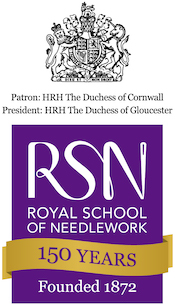Latest news
Keep up to date with all the latest news from the Royal School of Needlework
Laudian Fall for the Chapel Royal at Hampton Court Palace
5th June, 2020
The RSN Studio Embroiderers have been working remotely or furloughed since the third week of March and we are all missing Hampton Court Palace and the wonderful environment it is to work in every day. We consider ourselves very fortunate to have been involved with a selection of projects at the Palace, including working the replica King William III and Queen Mary II Cloth of State on display in the Palace State Rooms, as the original was destroyed by the awful fire in 1986. Last year, we embroidered copies of motifs taken from the Bacton Altar Frontal, displayed in the recent Palace Exhibition, ‘The Lost Dress of Elizabeth I’.
In 2016, we were commissioned to produce a Laudian Fall for the Altar in the Chapel Royal at Hampton Court Palace; this was required for a special service in June 2017. In the same year, the RSN had its own special anniversary, celebrating 30 years at the Palace having moved there in August 1987, a day never to be forgotten! What better way to celebrate an anniversary than to work with the Palace to create a lasting piece of embroidery that can be associated with us and enjoyed by many for centuries to come.
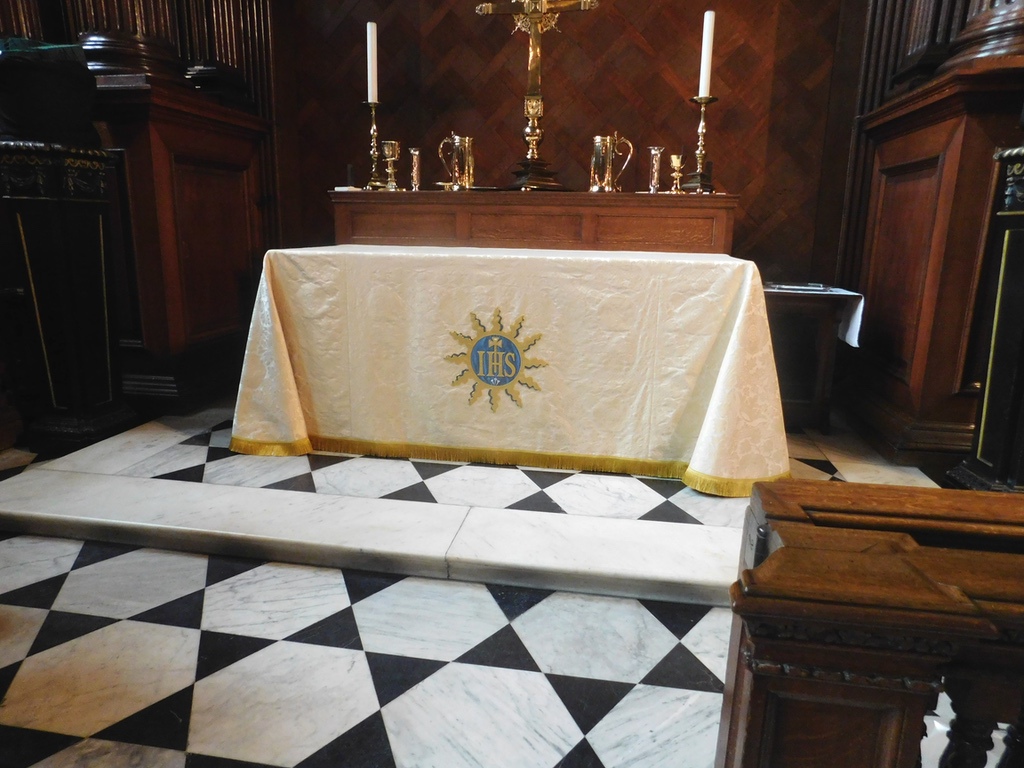
It was to be an all season/festal frontal so the base colour was to be cream and, after spending some time in the Chapel Royal, we felt it was important to bring in some of the blue that is so dominant in the chapel ceiling. The fabric used is the St Margaret’s Brocade, which includes a coronet and a Tudor rose in the figured pattern. The weave is a mix of cream and metallic gold and this subtle combination catches the light when viewed from different angles.
The design includes the Glory, represented by a circle of flames containing the letters IHS, with a cross and three nails. The Glory and lettering was applied Cloth of Gold with blue silk forming the shadow on the rays and the background of the central area. The fabric was edged with a combination of gold Japanese thread and Pearl Purl along with a handmade blue twisted cord to echo the blue silk. The nails were worked in silver kid leather, decorated with silver passing to form the head of the nail. The cross was decorated in scattered silver bright check chips to add a little sparkle and to balance the design by bringing through the silver from the nails.
A Laudian Fall, or altar cloth, takes its name from Archbishop Laud who advocated High Church Principles and especially emphasised liturgical ceremony. A Laudian Fall has rounded corners at the front and the back so is a large semi-circle when laid out flat as it normally covers the frontal, sides and back like a tablecloth. Laudian Falls are often used when an altar is exposed on all four sides. This particular Fall does not go fully down the back of the Altar, but you can see in the photograph that it is still a large piece. It was made up with a firm interlining to ensure the corners form a nice shape and was finished off with a gold coloured fringe and cream linen lining.
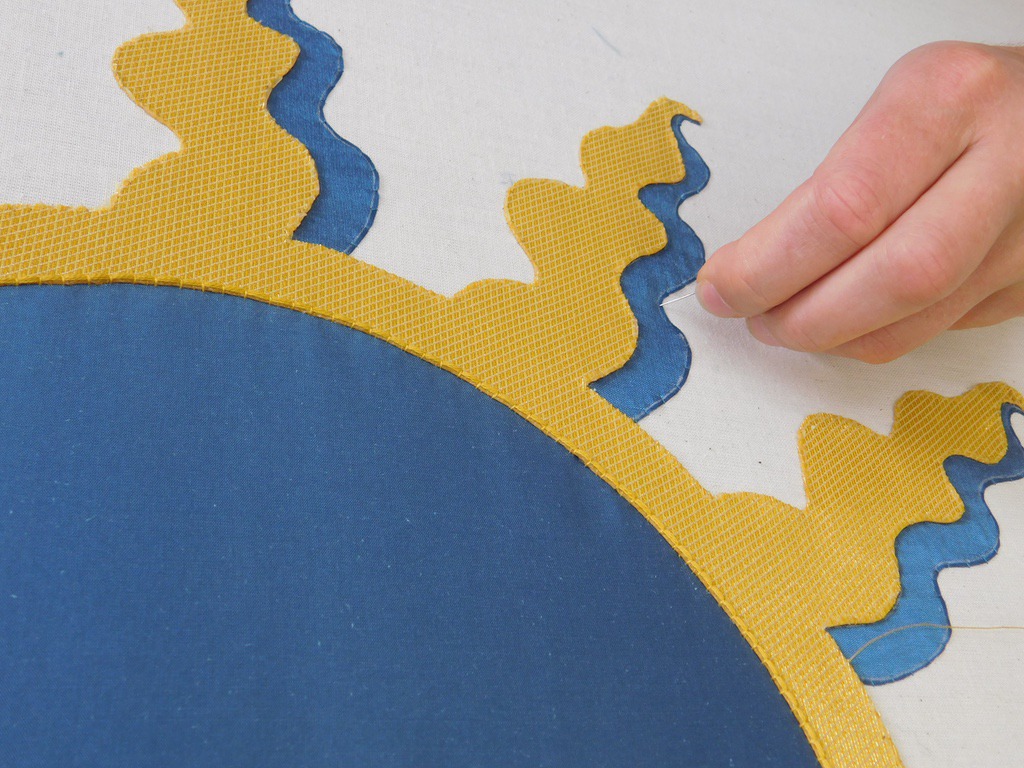
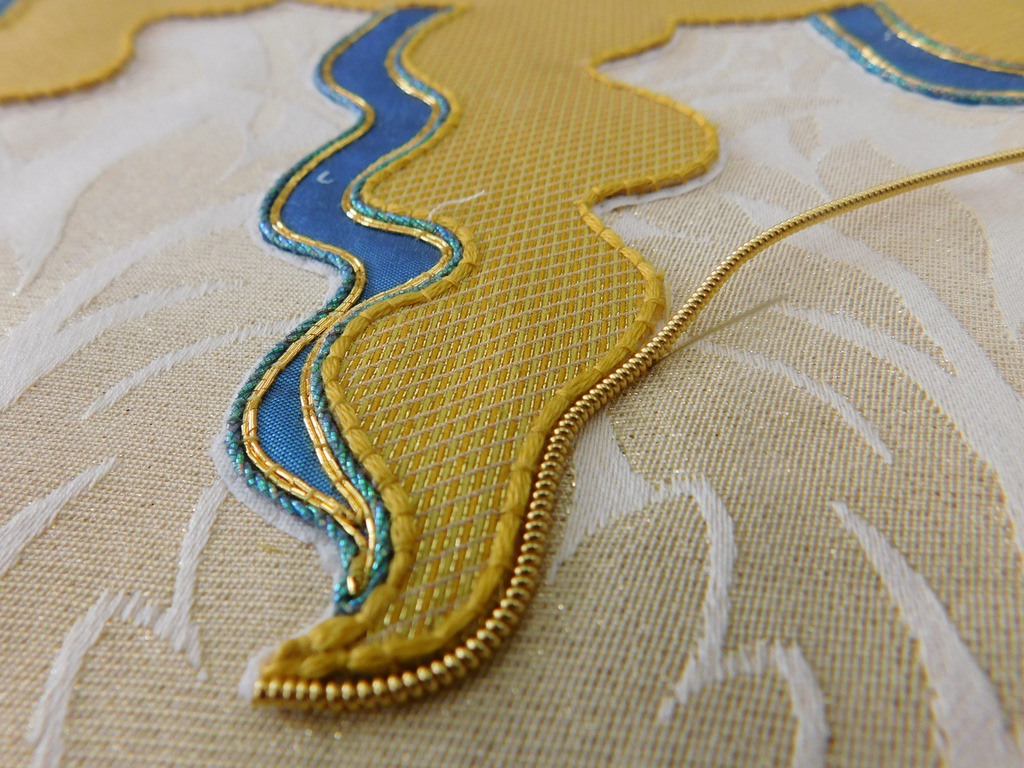
We worked closely with Father Antony, Chaplain of HM Chapel Royal Hampton Court Palace and Deputy Priest in Ordinary, along with John Barnes, who was Palace Director of Conservation & Learning at the time (now HRP Chief Executive). Father Antony was very specific on the imagery he wanted for this piece.
The Frontal was designed by Studio Embroiderer Marg Dier however, due to the time constraints, all of the Studio Embroiderers worked on the frontal to ensure completion in time for the special service on 13 June, attended by Her Majesty The Queen and The Duke of Edinburgh. It was the Centenary Celebrations for the Companions of Honour who include Sir David Attenborough, Dame Judi Dench, Dame Maggie Smith, Lord Seb Coe and Sir John Major, and also on the guest list were Dr Susan Kay-Williams, our Chief Executive, and Marg Dier who had designed the Fall.
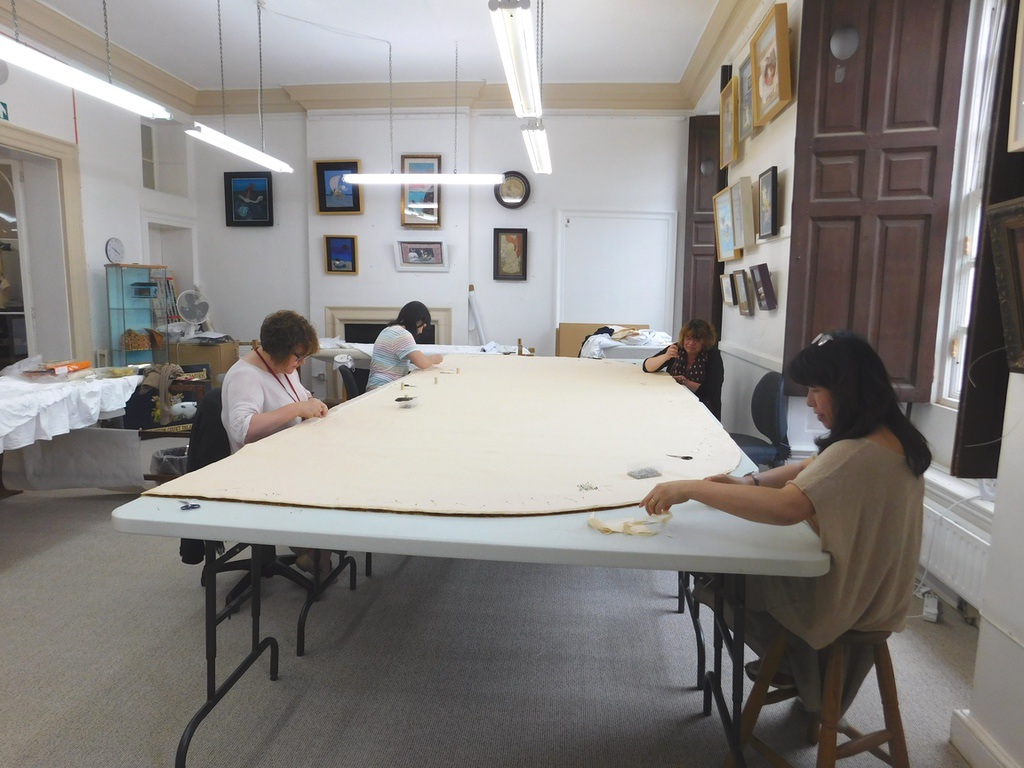
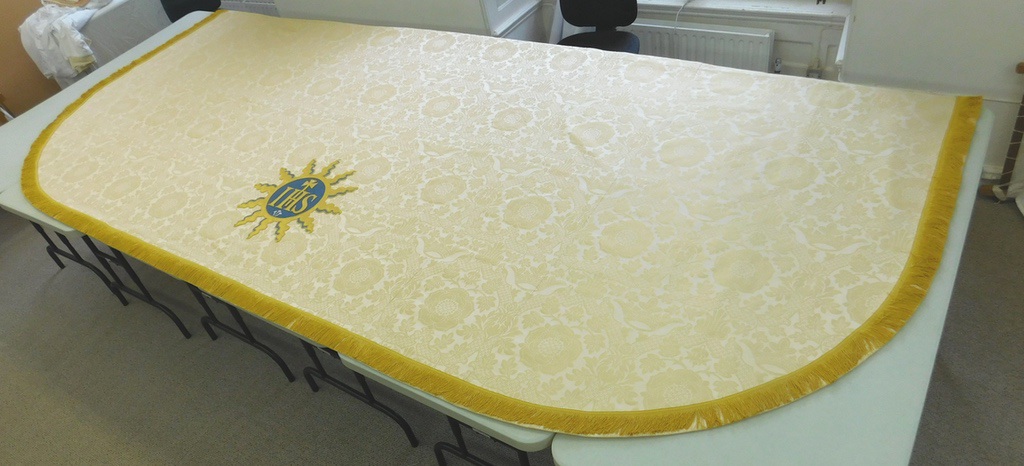
The completed piece is a perfect example of the RSN Embroidery Studio team working well under pressure, how we all work together to create a beautiful piece without it looking as if multiple hands have worked on it. This is how the RSN has always trained and will continue to train our students and staff for many years to come!
